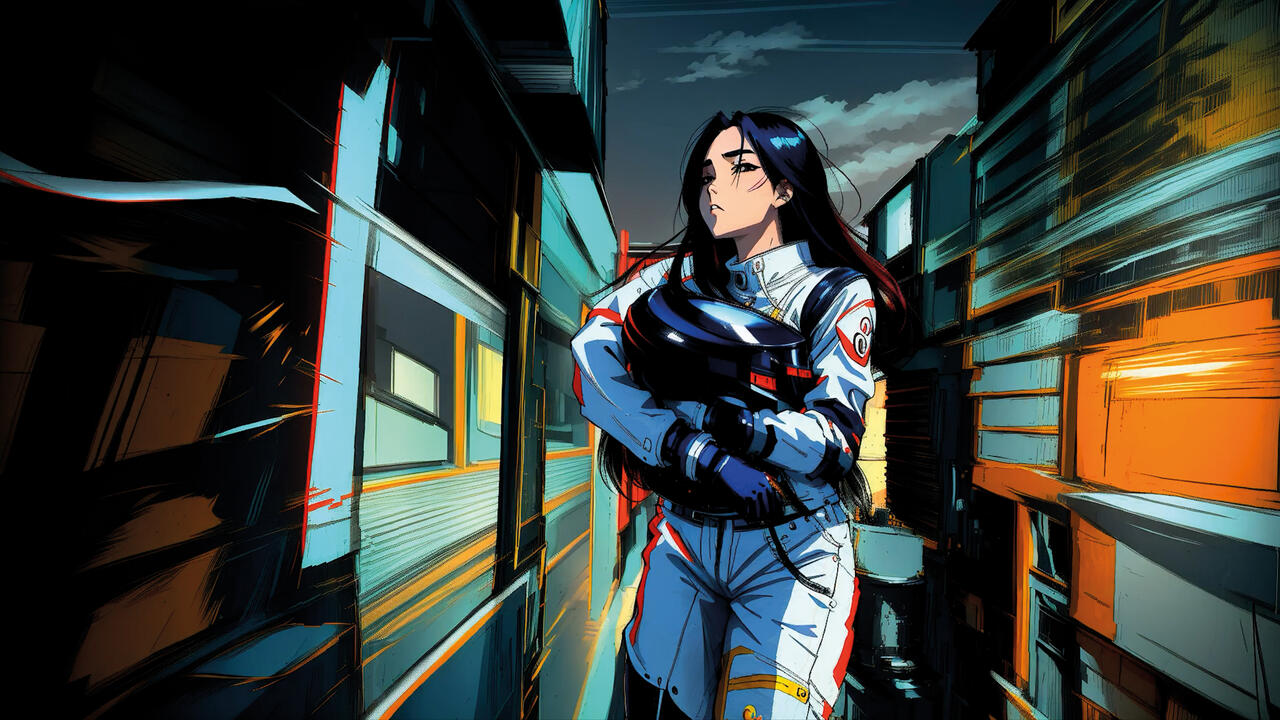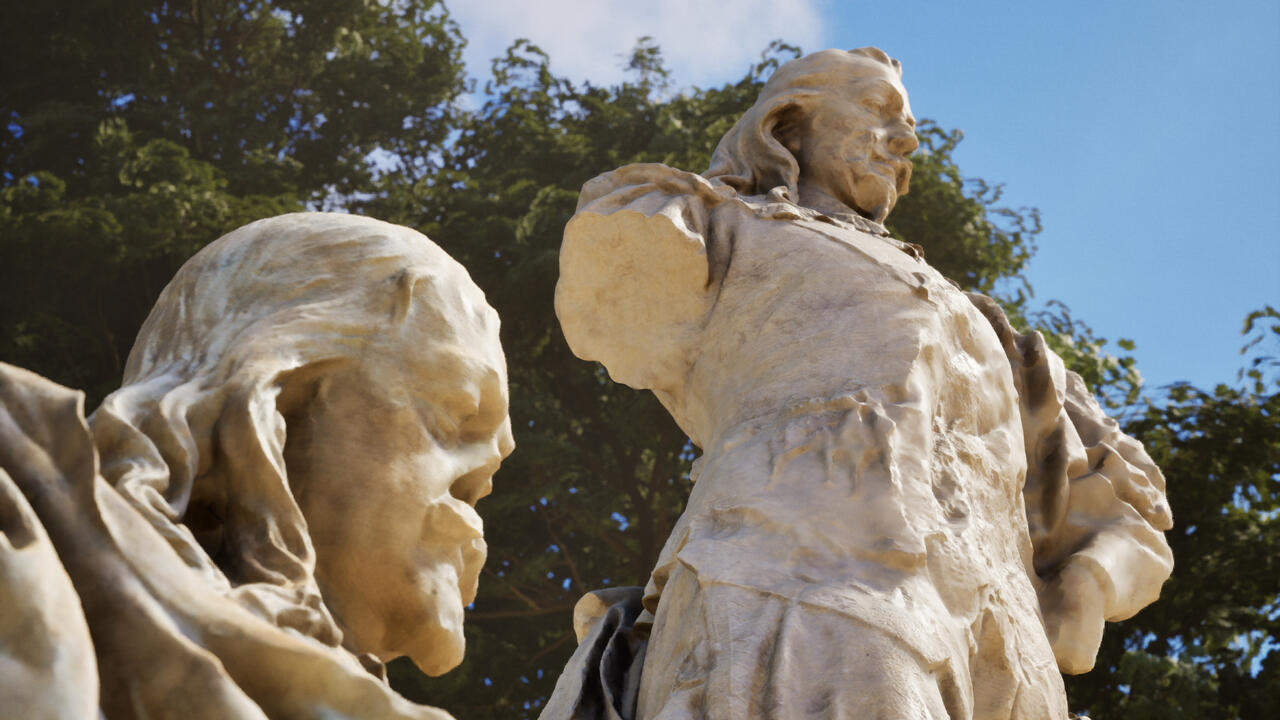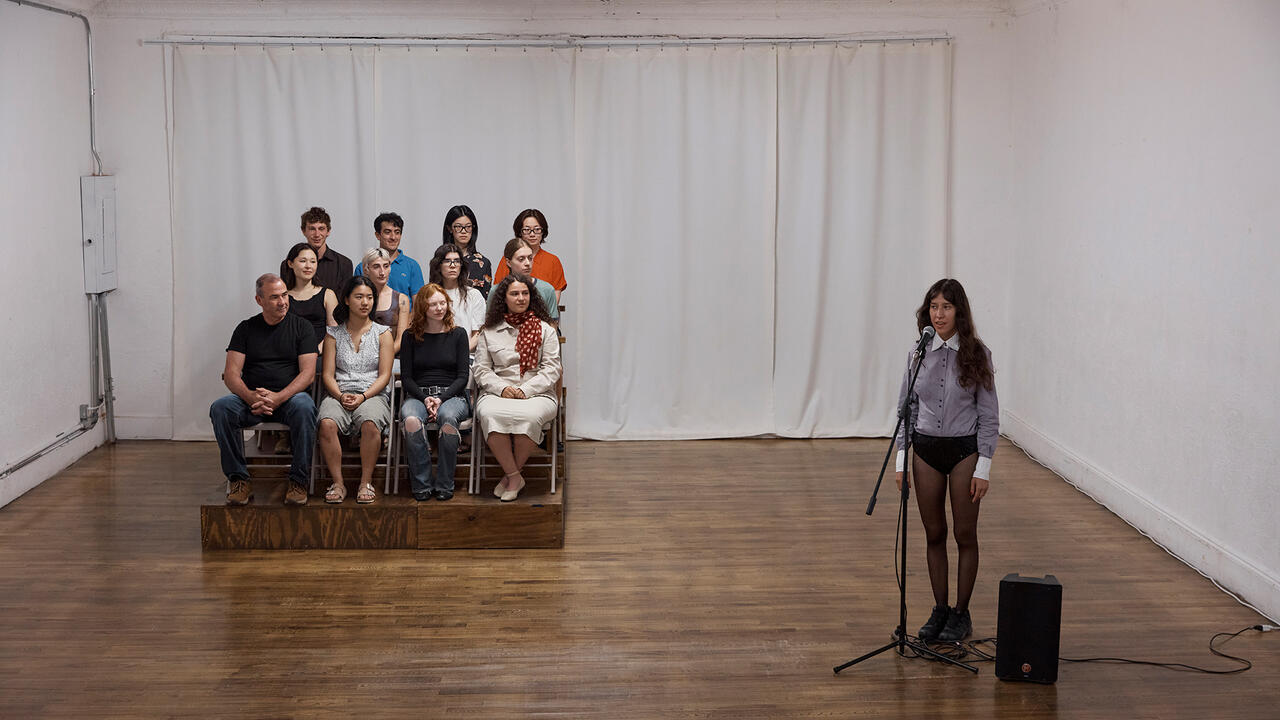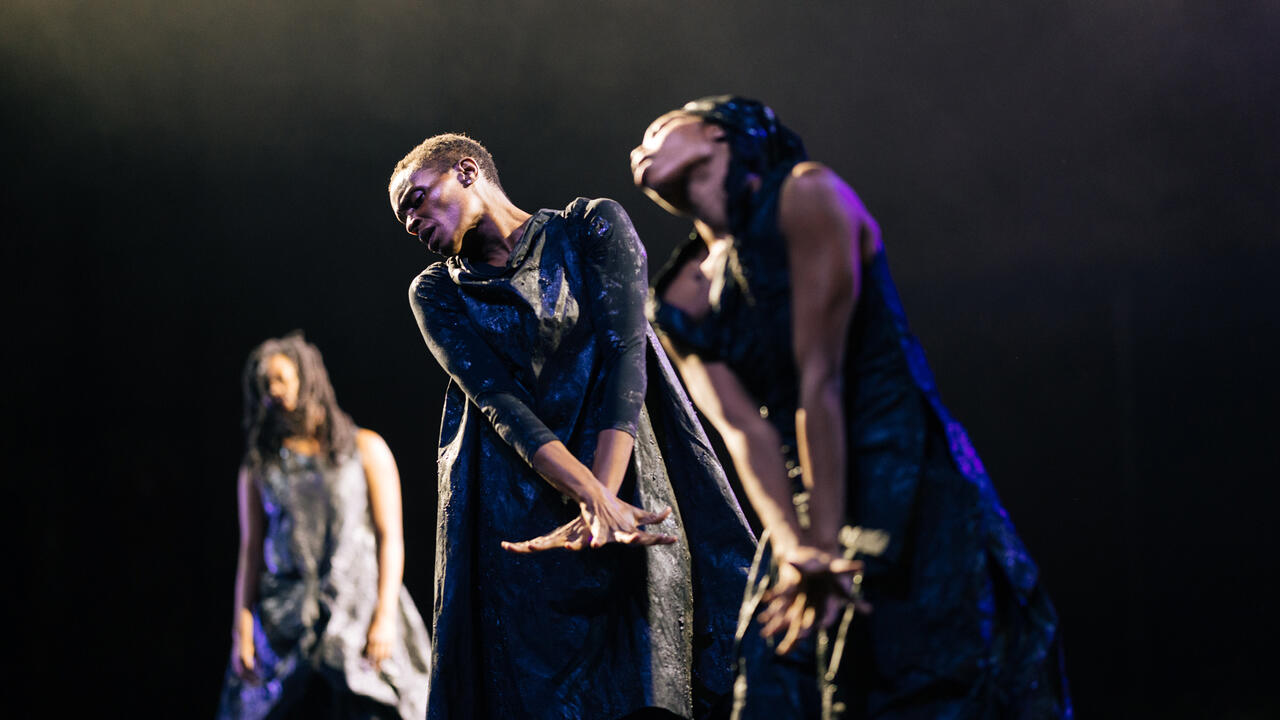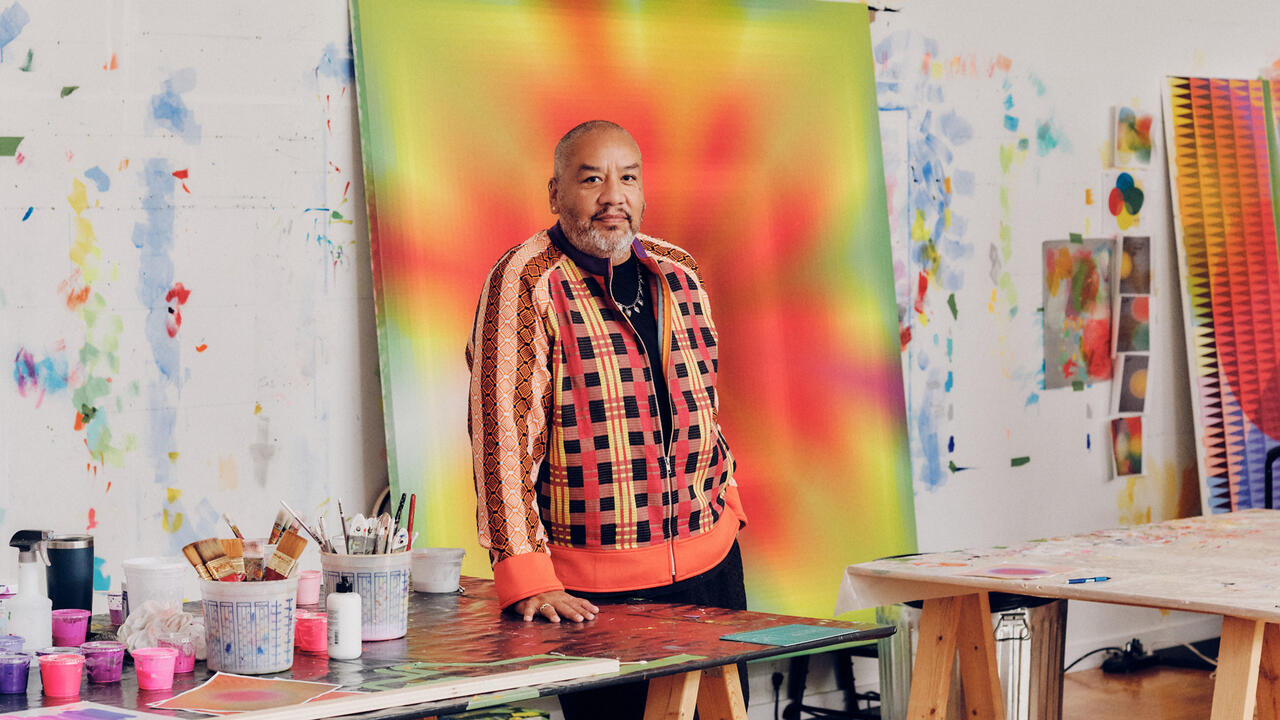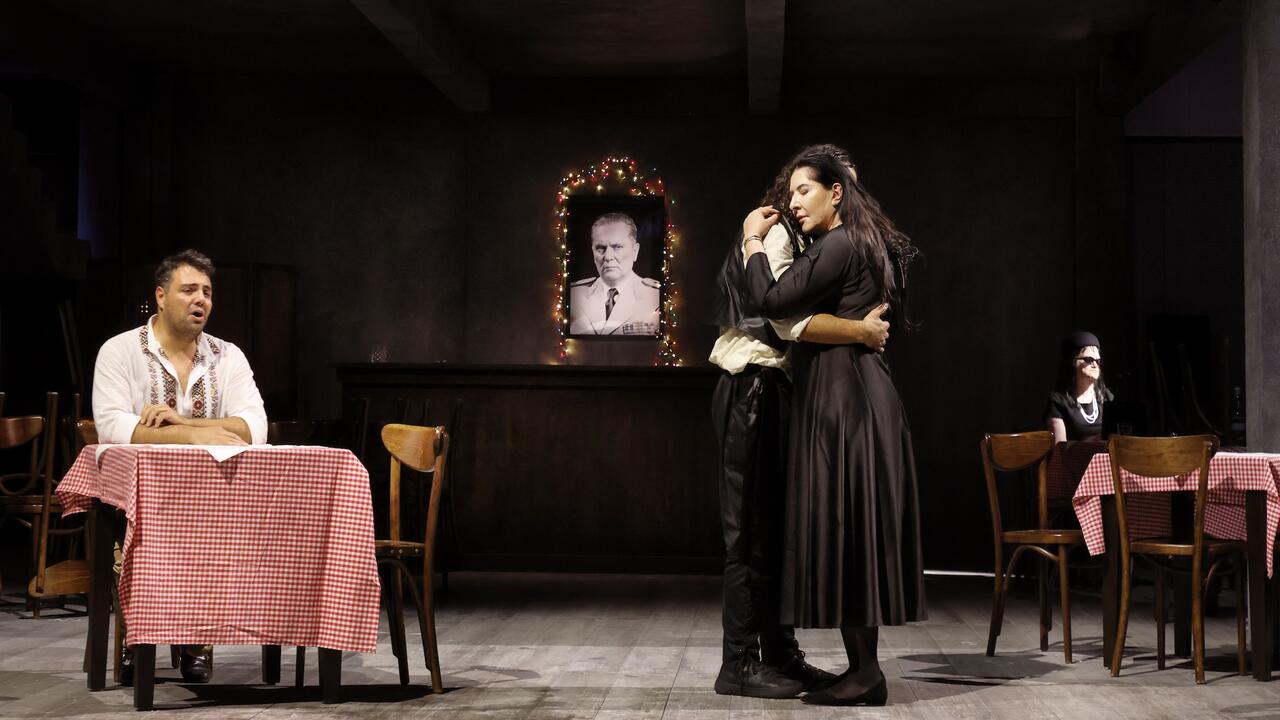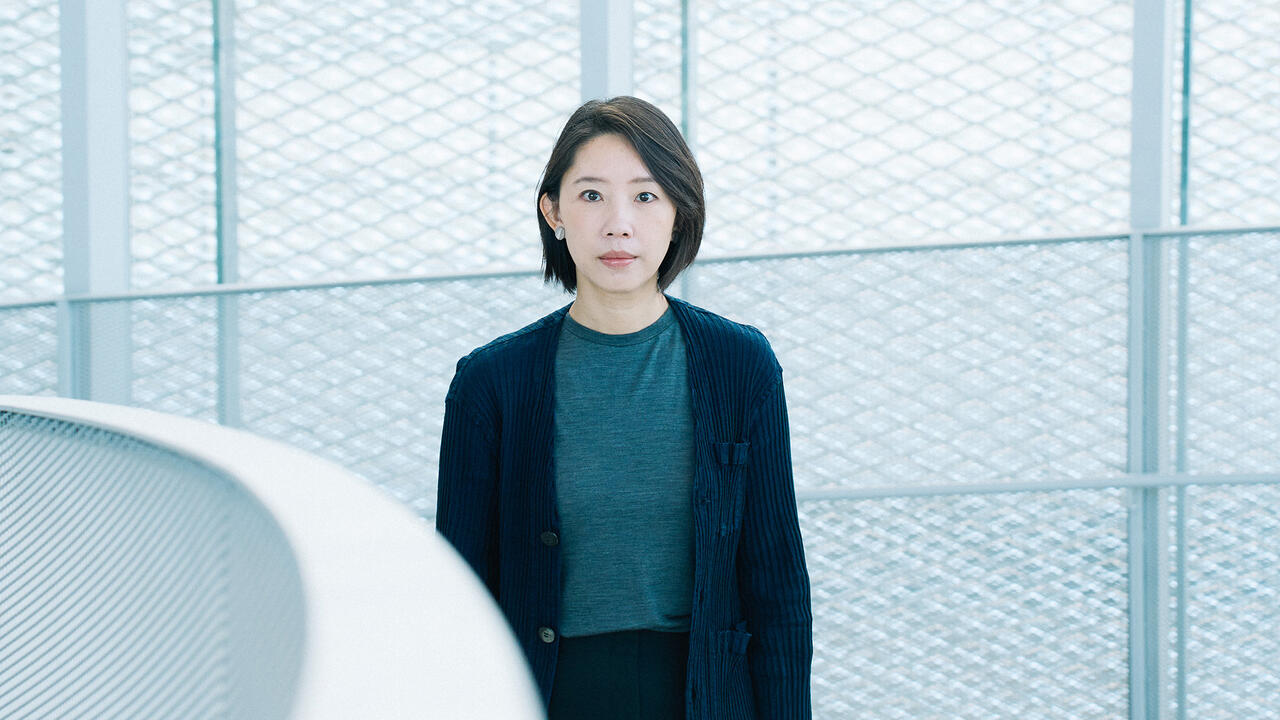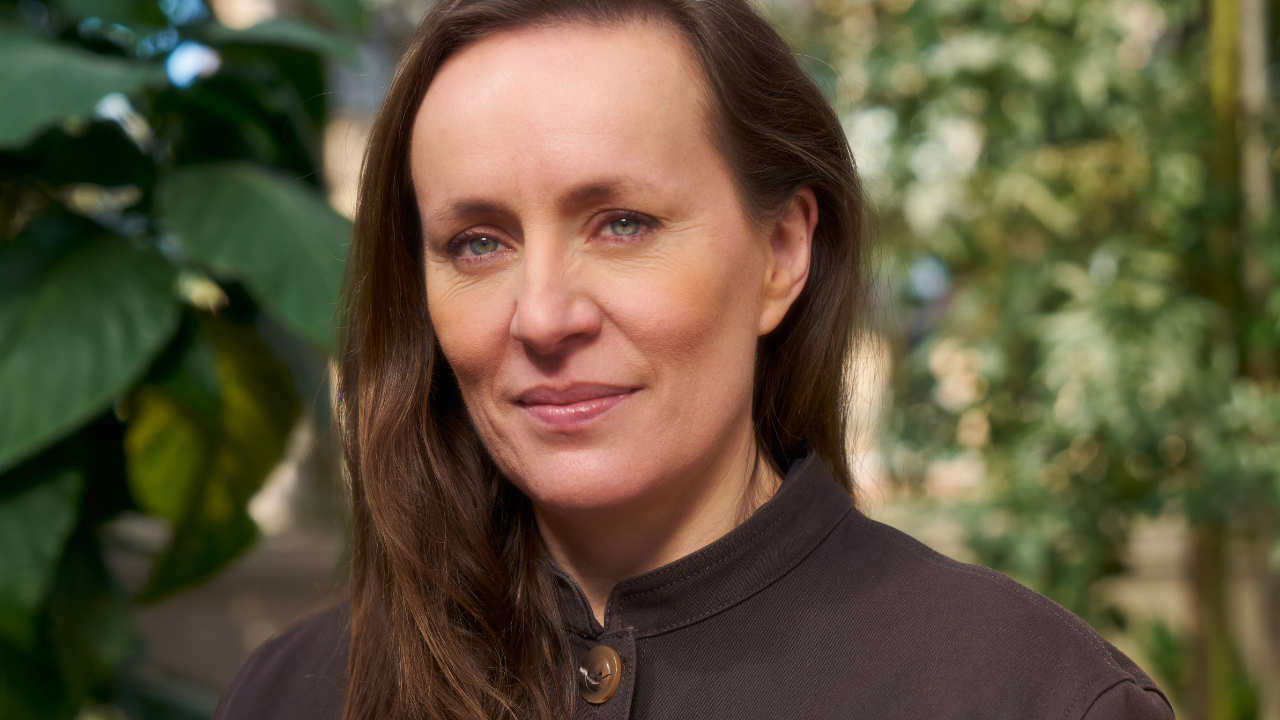Always Two: An Interview with Michelangelo Pistoletto
Fifty years after its first outing, the artist reprises his legendary Walking Sculpture performance in the US
Fifty years after its first outing, the artist reprises his legendary Walking Sculpture performance in the US

Perched on a quiet bend of the Hudson’s east bank, Cold Spring, New York, is a far cry from Turin. On a recent Saturday afternoon, however, the town’s Main Street hosted an event originating in the Piedmont capital 50 years ago, along with its creator, present in the flesh. Michelangelo Pistoletto (b.1933) proved one of the most recognizable contributors to Germano Celant’s Arte Povera group, the 50th anniversary of which has witnessed a spate of retrospectives and commemorations this autumn. With the inauguration in June of Magazzino Italian Art in Cold Spring – a museum boasting notable works by Pistoletto and his contemporaries – the lessons of postwar aesthetics have gained a new prominence and relevance this side of the Atlantic.
Vital to Arte Povera in general, and to Pistoletto’s work in particular, was the notion of unmediated, phenomenological experience as the crux of the encounter with art, no longer beholden to the strictures of institutional propriety or temporality. Unconventional materials appealed as much to the senses as to aesthetic sensibility, bound up with a widespread dematerialization of art practices in the 1960s (amidst an increasingly tense political atmosphere). Moving between painting, sculpture, mixed media installations and street-side performance, Pistoletto’s activity both preceded and outlasted Arte Povera’s five-year incarnation, whether on his own or with the collective of artists called Lo Zoo (The Zoo). As evidenced by the numerous mirror paintings debuted at Luhring Augustine gallery this past week, his practice continues to evolve, even as it takes up certain recurring threads.

His legendary Walking Sculpture constitutes one such thread. Reprised on numerous occasions since its original 1967 performance, the event first unfurled when Pistoletto decided to roll his Sfera di Giornali (Newspaper Sphere) – a globular sculpture of compacted newspapers detailing Italy’s fraught political climate – out of his studio and onto Turin’s streets. Joined by friends, colleagues and Turinese citizens who helped along the way, Pistoletto rolled the Sfera between three of the city’s notable galleries of contemporary art. Even when it came to rest again inside gallery walls – and was subsequently enshrined as a museum piece – the work bore with it both the traces of its urban trajectory and the history of its collective activation.
With a new sphere created expressly for the event, the Cold Spring performance – organized entirely by Magazzino – brought the Walking Sculpture to life once again. As he arrived in a red FIAT Cinquecento with the outsized object mounted in the back, Pistoletto brought a slice of Turin with him. Along with the town’s mayor, and Giorgio Spanu and Nancy Olnick, Magazinno’s founders, Pistoletto addressed an enthusiastic crowd of young and old before repeating his performance 50 years after its first iteration. With an alacrity belying his 84 years, Pistoletto led the group in rolling the ball up Main Street’s slight uphill pitch.

Cold Spring’s quaint charm suggests anything but the politically charged streets of late 1960s Turin, where strikes roiled both the university and FIAT’s Lingotto factory. Yet as the crowd rolled the ball together amid cheers and laughs, a sense of a metaphorical march or demonstration was once again palpable, rich with an atmosphere of collective purpose and play. Held aloft by several hands at one point, the globe took that sense of communal responsibility to a higher metaphorical plane. As the piece returned to Magazzino – in whose collection it will remain – those meanings seemed to buoy even the now static poise of Pistoletto’s sphere.
Following the event, I sat down for a conversation with Pistoletto about his work both past and present, as well as his reflections on the continued relevance of a participatory aesthetics.
Ara H. Merjian Could you talk a bit about the relationship between the Walking Sculpture, which you first brought through the streets of Turin in 1967 in the form of the Sfera di giornali, and the Minus Objects (1965-66), sculptures which you had developed in the years just prior?
Michelangelo Pistoletto The Sfera di giornali formed part of the Minus Objects. But all the Minus Objects were static, in the sense that they bore a three-dimensional stability, or else were placed against the wall. The Sfera was round. And so, it was the only piece that could be brought outdoors, in a mobile way. This is why I started to push the work outside of my studio. It became a kind of sphere of connection between people. It’s a work that became active on its own.

AHM You had also initiated a collective of artists called Lo Zoo (The Zoo), in whose company you made various interventions into urban space, outside of the gallery. Did Lo Zoo bear upon the idea of the Walking Sculpture?
MP After rolling the Sphere in the streets and its having been taken hold of by the public, I thought to take a new step. I placed an announcement on my studio door, opening it up to other young artists who might want to come and present their work and participate. People from the literary world came, along with others from theatre and cinema, and all together we decided to launch a collaboration involving different aesthetic languages. We went out into the street, and we called it The Zoo. We started to work with society outside of studio walls.
AHM What was the original impetus or inspiration for bringing the Sphere out onto the street, to roll it under Turin’s porticoes and through its piazzas? What most compelled you to do this?
MP The definition of modern art has been strongly conditioned by the work of Duchamp, in terms of a transfer of the common object from culture at large into the temple of art. My idea was to bring the object from the temple of art back to society. In this way the artwork would create a certain interaction in society far more than in the gallery or in a museum.

AHM In the 50 years that have passed since the original performance of Walking Sculpture, what seem to you the most significant changes in the world of aesthetics?
MP You know, Walking Sculpture was part of a group of works which helped launch the Arte Povera movement. I believe that Arte Povera was the last artistic movement of the 20th century; there were no real movements after it in the same way. But there is a new ‘academy’ in the world. I mean academy in the sense that young artists worldwide are able to produce something very personal. It is thus an academy of personal, individual work.
Now, I think it’s very important that artists not only go on making individual works but start to activate – to activate creativity in society, in social life. In this way I think the Sfera, in leaving the studio space and going into the street, was a way of establishing this kind of connection. I think that today we need to make young artists understand that they need to break out of institutions and make work in the realm of society.
AHM On the occasion of the exhibition ‘Con/temp/l’azione’ at Sperone gallery in Turin in 1967, the gallery contained several objects, yet the Sfera was placed in the doorway. It thus appears in several photographs on the threshold between the gallery space and the street. Could you talk about this?
MP I didn’t want the Sfera to come inside the space of art. I wanted it to remain outside. We rolled it from one gallery to the other [Galleria Stein, Sperone and Il Punto] without stopping. In this way we were interacting with people on the street, making the city participate in the work of art. The trio of galleries were instrumental in generating this kind of triangular momentum.

AHM Do you think that when the Sfera comes (back) inside the gallery space that it somehow changes?
MP Today we know the meaning of this work. We know that a work can go outside and come back in. We also have documentation of the many places where this has been done with the Sfera: London, Paris, Havana, etc. And also here today. It’s something that has a particular meaning and dynamic. When you see the Sfera at rest inside, you know through documentation what its history is. I also made a series of mirror paintings based upon the Minus Objects. One of these was the Sfera, and this is the painting in Magazzino’s collection.
AHM In the 1960s you were one of the protagonists of an increasingly participatory and dematerialized aesthetics, in which action and experience played an essential role. You have already spoken about this a bit with regard to younger artists. But how do you see these elements of participation and dematerialization as potential strategies in art practice today?
MP I think that artists today have two possibilities. Either to work and express themselves individually, or else not merely to express themselves in an isolated way, but to activate something between and among individuals. Keeping in mind that we are always two. And what two people can do together is to create something together. So the creation is no longer individual, but exists between two people. Two people can create something which never existed before … but which is already society.

AHM Your new ‘Scaffali’ (Shelves) series, exhibited as of yesterday in New York at Luhring Augustine gallery, takes up again the strategy of your mirror paintings, developed in the ’60s. Why the use now of the shelf as a compositional premise? What effect do you seek with the continued use of the mirror in these works?
MP The mirror always represents infinity, totality, and the possibility of the viewer to be part in the work, through his reflection. [The ‘Scaffali’ works] document something that we can find in different ways everywhere. For every activity that we undertake in society we use shelves to organize instruments or documents.
AHM Do you conceive of any political dimension or application in your work?
MP My work is totally political, and it will be more and more engaged in this sense. As I mentioned already, when we think about being ‘two’, we already form the beginning of a social activity in some way, and we share a common responsibility. When we try to find a shared responsibility, we initiate a political strategy in a certain way.

AHM Could you speak briefly about your recent retrospective in Cuba and the reception that your work had in that context?
MP Cuba is a very important place for me because it is where the central conflict of the late 20th century – between communism and capitalism – remains crystalized. And now what must they do? They have to decide where they want to go. Probably in Cuba it will be possible to develop an experiment with new form of politics, which will be neither one nor the other, neither strictly capitalism nor communism. So I think it is a place where bringing art as a dynamic of creation and responsibility, of freedom and responsibility, is important. That is the essence of modern art: to find a way to shape new visions and to organize new societies. Perhaps we succeed, perhaps we won’t. But we try.
AHM Finally, how did you experience today’s events and performance? Did it stir up any sense of melancholy? What struck you most, aside from the stark differences between Turin and Cold Spring?
MP What’s important to see is what happens when the Sfera hits the street: it is the same everywhere. There is a kind of pleasure and enthusiasm on behalf of the public. It becomes a kind of ritual in common, a ritual of being together, enjoying, acting together. Whether 50 years ago, or ten years ago, it’s the same. In different places the same thing emerges: people enjoy taking part together, acting together, playing together.
Main image: Michelangelo Pistoletto, Walking Sculpture, 1967/2017, performance documentation, Cold Spring, New York. Courtesy: the artist, Magazzino Italian Art, Cold Spring, New York; photograph: Marco Anelli









